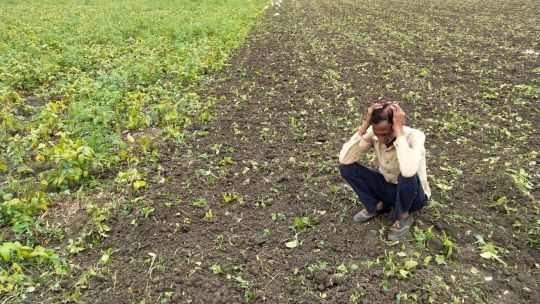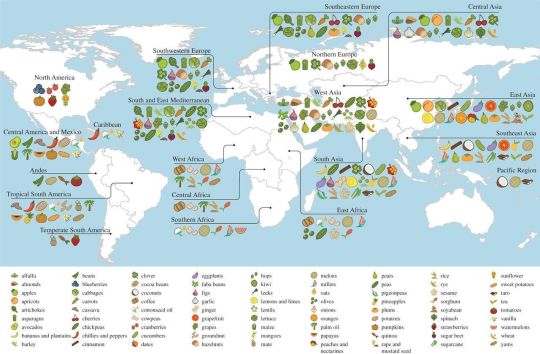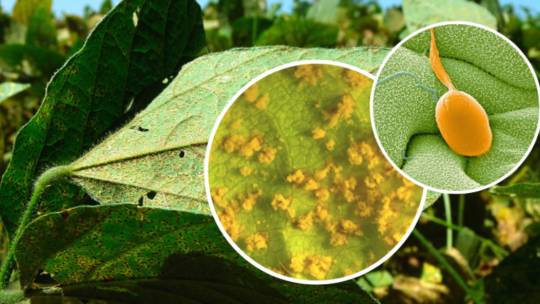#soybean crop
Text
Combining Beans
youtube
#ReefDVMs#RMSpeltz Farm#john deere#john deere combine#combining beans#john deere combining#farming soybeans#soybeans#aerial combining#aerial farming#aerial john deere#john deere tractor#tractor#combine#picking field#picking crops#soybean crop#farming#homesteading#homesteading soybeans#dji drone#farm drone#Youtube
0 notes
Text
obscure underdesigned online scientific DNA databases chocked full long strings of genetic code printed out at length on the page carefully filed under each trait/gene/line giving me strange and complicated thoughts and feelings about the nature of life and biology like im seeing something i shouldnt but could build my own drought-resistant soybeans from scratch if i just reacted things in the right order in a test tube but also the horror and mystification that some of these genes are copyrighted by x company in x year and are documented on the site like a secret history of strange quiet things but the history spans public academic discoveries as well and the comfort that none of any of this truly belongs to us and never will my beloved
#this was inspired by soybase.org but it’s not the only one out there#there are dna databases for every crop and model organism on the planet if you look#the difference is that I came upon it because I found a bunch of samples of different soybean genetic lines at work#labeled by company and year back to the 1960s#and I was trying to find like. if they were even still around in current soybean lines lmao
694 notes
·
View notes
Text
Technique using light and artificial intelligence is effective in selecting immature soybean seeds

- By Luciana Constantino , Agência FAPESP -
Historically based on tradition and experience, the decision-making process in agriculture has been transformed in recent years by technological innovations that scale up production and provide solutions to the challenges posed by pests, natural limitations on arable land and the effects of climate change.
Brazilian researchers have developed a technique to help select seeds of soybeans and other legumes in accordance with maturity stages, assuring physiological quality without destroying samples.
The scientists used light and artificial intelligence (AI) to show that chlorophyll fluorescence is an effective and reliable indicator of soybean seed maturity. They validated the results by means of machine learning algorithms. The novel technique can be used to classify commercial seeds.
The greener and less mature the seeds, the less vigor and germinating power they have, so that their quality is lower. As a result, the market value of soybean seed lots with more than 8% green seeds is reduced and they cannot be exported. Green seeds also produce less oil, with higher acidity and higher refining costs.
Manual seed quality analysis is required by law in Brazil. It must be performed by a technician accredited with the Ministry of Agriculture and entails visual separation based on color. Green seeds are discarded and destroyed, forming waste.
“I consider this study a milestone. No studies in the literature to date have addressed the possibility of separating seed stages based on chlorophyll fluorescence. The method can be used for other legumes besides soybeans. It’s a major advance in scientific knowledge,” said Thiago Barbosa Batista, first author of an article on the study published in the journal Frontiers in Plant Science.
The research was part of Batista’s PhD thesis, developed with FAPESP’s support. His thesis advisor was Edvaldo Aparecido Amaral da Silva, a professor at São Paulo State University's School of Agricultural Sciences (FCA-UNESP) in Botucatu, and last author of the article.
“Phenotyping various kinds of seed was the main reason for starting our thematic group. We focused on chlorophyll retention and its association with low quality, and this in turn led to the need to analyze the stages of seed development. The results of this study enhance the reliability of maturity characterization when seeds are similar shades of green, especially in nearby stages,” said Amaral da Silva, who leads a project on the “green seed problem”.
The study was conducted in partnership with Clíssia Barboza da Silva, a researcher at the Radiobiology and Environment Laboratory belonging to the University of São Paulo's Center for Nuclear Energy in Agriculture (CENA-USP). Barboza da Silva is also supported by FAPESP via three projects (17/15220-7, 18/03802-4, and 18/01774-3).
“This technique avoids destroying seeds, which are classified automatically by the AI algorithm. We currently analyze samples, but it could be done seed by seed in future,” she said.
For some years Barboza da Silva has analyzed seeds using light-based technologies such as autofluorescence spectral imaging. In September 2021, a study led by her showed that images based on autofluorescence could be used to detect changes in the optical properties of soybean seed tissue and consistently distinguish between seeds with high and low vigor. An article on the study was published in Scientific Reports.
Maturity in images
The researchers sowed soybean seeds in pots, maintaining relative air humidity at 65% and average air temperature at 24.2 °C. Pods were collected manually during the maturation phase, and the seeds were classified by reproductive stage, as R7.1 (start of maturation), R7.2 (mass maturity), R7.3 (seed disconnected from mother plant), R8 (harvest point), or R9 (final maturity).
Physical parameters, germination, vigor and pigment dynamics were analyzed for seeds collected at different stages of maturation.
High-resolution autofluorescence spectral images (2192x2192 pixels) were captured using a VideometerLab4 system with light-emitting diodes (LEDs) at different excitation wavelengths combined with long-pass optical filters.
Autofluorescence signals were extracted from images captured at different excitation/emission combinations, but the researchers concluded that the combinations 660/700 nanometers (nm) and 405/600 nm performed fastest and most accurately in identifying the different stages of seed maturation.
Chlorophyll is highly fluorescent. It emits light when exposed to radiation at specific wavelengths because it does not use all the energy from the light and “loses” part of it via fluorescence. This “surplus” is captured by the equipment, which converts it into an electrical signal, generating an image with varying shades of gray as well as white and black. The lighter the area, the higher the chlorophyll content, showing that the seed is less mature.
Mature seeds normally retain chlorophyll as a source of energy while the nutrients required for development of the young plant (lipids, proteins and carbohydrates) are being stored. After fulfilling this function, the chlorophyll degrades, and the less chlorophyll remains, the more advanced the seed is in the maturation process, with more nutrients and better quality.
The “green seed problem” refers to chlorophyll retention in mature seeds and is associated with lower oil and seed quality. It can be caused by frost but is exacerbated by the high temperatures and water stress brought by climate change in recent years.
The article “A reliable method to recognize soybean seed maturation stages based on autofluorescence-spectral Imaging combined with machine learning algorithms” is at: www.frontiersin.org/articles/10.3389/fpls.2022.914287/full.
This text was originally published by FAPESP Agency according to Creative Commons license CC-BY-NC-ND. Read the original here.
--
Header image: Researcher Clíssia Barboza da Silva capturing images of soybean seed chlorophyll fluorescence with the VideometerLab4. Credit: Thiago Barbosa Batista/UNESP.
Read Also
‘Super-spuds’ to the rescue as typical tubers feel the heat
#agriculture#agtech#agritech#ai#artificial intelligence#light#soybean#crops#soy#autofluorescence#imaging#food#brazil#plants#biology
2 notes
·
View notes
Text
Innovative Yield Trait Enhances Soybean Production: A Closer Look at Texas Crop Science's Breakthrough
Key Takeaways
Yield Increase Reported: Texas Crop Science (TCS) announced a 21% increase in soybean yield due to its new yield trait, aiming to impact the agricultural sector significantly.
Potential Revenue Growth: This development could lead to an additional $121 per acre for soybean growers in the U.S., based on current market values.
Global Scale Impact: The yield trait by TCS is positioned…

View On WordPress
0 notes
Text
Soybean Investors Will Want to Keep an Eye on Argentina’s Rainfall
https://www.nasdaq.com/articles/soybean-investors-will-want-to-keep-an-eye-on-argentinas-rainfall
#argentina#agriculture#rainfall#soybeans#finance and investments#world markets#crop farming#inflation figures#farming#technology
0 notes
Text
Plant-2023 is Already Set in Stone
Plant-2023 is already on the minds of farmers across the country. As proof, Farm Futures recently did a survey of farmers in all parts of the country who will get right to work this spring. Jacqueline Holland is the grain marketing analyst for Farm Futures.
Even if wheat plant-2023 does put a cap on corn and soybean plantings, Holland says American farmers are still going to plant a whole bunch…

View On WordPress
#acres#commodities#commodity prices#corn#crop rotations#crops#plant 2023#soy crush plants#soybeans#spring planting#wheat
1 note
·
View note
Text
यलो मोजेक रोग की चपेट में सोयाबीन की खेती, किसान ने ट्रैक्टर चलाकर नष्ट कर दी फसल
यलो मोजेक रोग की चपेट में सोयाबीन की खेती, किसान ने ट्रैक्टर चलाकर नष्ट कर दी फसल
सोयाबीन के सबसे बड़े उत्पादक मध्य प्रदेश में यलो मोजेक रोग ने किसानों की मेहनत पर पानी फेर दिया है. खेतों में बीमारी फैलने के बावजूद किसी भी अधिकारी ने मुआयना करना जरूरी नहीं समझा. किसानों को मुआवजा मिलने की बात तो दूर है.
सोयाबीन की खेती पर यलो मोजेक रोग का प्रकोप. खराब हुई फसल.
सोयाबीन के सबसे बड़े उत्पादक मध्य प्रदेश के किसान फसल में यलो मोजेक रोग से परेशान हैं. उनकी लाखों की लागत बर्बाद हो…

View On WordPress
0 notes
Text
Babygirl I woke up at 7 last morning I wake up at 7 again I was yawning exhausted the entire day why am I not tired tonighttt
#ugh. im like awake i could write or play a game rn. might read a bit#i feel old i cant read in cars anymore.#im so distracted by everhthing was in the car maybe 7 hours today and spent less than an hour actively doing stuff on it#while in car i was just listening to music and looking out the window#also somehow my parents will see random crops growing and know what it is. why can they tell that the fields are young soybean plants#ive never seen soybean plants. like okay theyre not from the midwest lol#whateverr
1 note
·
View note
Text

---



For the Maya, the honey bee is more than an insect. For millennia, the tiny, stingless species Melipona beecheii -- much smaller than Apis mellifera, the European honey bee -- has been revered in the Maya homeland in what is now Central America. Honey made by the animal the Maya call Xunan kab has long been used in a sacred drink, and as medicine to treat a whole host of ailments, from fevers to animal bites. The god of bees appears in relief on the walls of the imposing seacliff fortress of Tulum, the sprawling inland complex of Cobá, and at other ancient sites.
Today, in small, open-sided, thatched-roof structures deep in the tropical forests of Mexico’s Yucatán Peninsula, traditional beekeepers still tend to Xunan kab colonies. The bees emerge from narrow openings in their hollow log homes each morning to forage for pollen and nectar among the lush forest flowers and, increasingly, the cultivated crops beyond the forests’ shrinking borders. And that is where the sacred bee of the Maya gets into trouble.
---
In 2012, the Mexican government granted permission to Monsanto to plant genetically modified soybeans in Campeche and other states on the peninsula without first consulting local communities. The soybeans are engineered to withstand high doses of the controversial weedkiller Roundup; multiple studies have shown exposure to its main ingredient, glyphosate, negatively impacts bees, including by impairing behavior and changing the composition of the animals’ gut microbiome. Though soy is self-pollinating and doesn’t rely on insects, bees do visit the plants while foraging, collecting nectar and pollen as they go. Soon, Maya beekeepers found their bees disoriented and dying in high numbers. And Leydy Pech found her voice.
A traditional Maya beekeeper from the small Campeche city of Hopelchén, Pech had long advocated for sustainable agriculture and the integration of Indigenous knowledge into modern practice. But the new threat to her Xunan kab stirred her to action as never before. She led an assault on the Monsanto program on multiple fronts: legal, academic, and public outrage, including staging protests at ancient Maya sites. The crux of the legal argument by Pech and her allies was that the government had violated its own law by failing to consult with Indigenous communities before granting the permit to Monsanto. In 2015, Mexico’s Supreme Court unanimously agreed. Two years later, the government revoked the permit to plant the crops.
---
As Pech saw it, the fight was not simply about protecting the sacred bee. The campaign was to protect entire ecosystems, the communities that rely on them, and a way of life increasingly threatened by the rise of industrial agriculture, climate change, and deforestation.
“Bees depend on the plants in the forest to produce honey,” she told the public radio program Living on Earth in 2021. “So, less forest means less honey [...]. Struggles like these are long and generational. [...] ”
---
Headline, images, captions, and all text by: Gemma Tarlach. “The Keeper of Sacred Bees Who Took on a Giant.” Atlas Obscura. 23 March 2022. [The first image in this post was not included with Atlas Obscura’s article, but was added by me. Photo by The Goldman Environmental Prize, from “The Ladies of Honey: Protecting Bees and Preserving Tradition,” published online in May 2021. With caption added by me.]
4K notes
·
View notes
Text
Soybean Crop : उगवण झालेल्या सोयाबीनवर गोगलगायीचा ताव, धनंजय मुंडेंनी मांडले सरकारसमोर शेतकऱ्यांचे गऱ्हाणे
Soybean Crop : उगवण झालेल्या सोयाबीनवर गोगलगायीचा ताव, धनंजय मुंडेंनी मांडले सरकारसमोर शेतकऱ्यांचे गऱ्हाणे
Soybean Crop : उगवण झालेल्या सोयाबीनवर गोगलगायीचा ताव, धनंजय मुंडेंनी मांडले सरकारसमोर शेतकऱ्यांचे गऱ्हाणे
खरीप हंगामातील पेरण्या आता अंतिम टप्प्यात आहेत. असे असताना पेरणी झालेल्या क्षेत्रावर पिकांची उगवणही झाली आहे. पण पीक कोवळे असतानाच गोगलगायी त्यावर ताव मारत आहेत. त्यामुळे उगवताच पिके नष्ट होत असून याचा बंदोबस्त तरी करावा कसा असा प्रश्न आहे. गोगलगायींच्या प्रादुर्भावाने उगवलेली सोयाबीन पिके…
View On WordPress
#crop#soybean#आजची बातमी#आताची बातमी#उगवण#गऱ्हाणे#गोगलगायीचा#झालेल्या#ठळक बातमी#ताजी बातमी#ताव#धनंजय#बातम्या#भारत बातम्या#भारत बातम्या मराठी#भारत लाईव्ह मीडिया#मराठी न्यूज#मराठी बातम्या#मराठी समाचार#महाराष्ट्र न्यूज#महाराष्ट्र बातम्या#महाराष्ट्र समाचार#मांडले#मुंडेंनी#राजकारण#शेतकऱ्यांचे#सरकारसमोर#सोयाबीनवर
0 notes
Photo

Vines for days…. #growing #gardening #soybeans #poledancing #vinesforlife #income #ripening #gardenlife #greenthumb #selfsufficient #veggies #fruits #crops #foodie #mealtime #gardenersworld #kc #kcmo #kansascity #missouri #igkc #igkansascity #instakc #instakansascity #recoverybunker (at The Recovery Bunker) https://www.instagram.com/p/CePz7kCOPKw/?igshid=NGJjMDIxMWI=
#growing#gardening#soybeans#poledancing#vinesforlife#income#ripening#gardenlife#greenthumb#selfsufficient#veggies#fruits#crops#foodie#mealtime#gardenersworld#kc#kcmo#kansascity#missouri#igkc#igkansascity#instakc#instakansascity#recoverybunker
0 notes
Note
Just banking on prev anons question but um… just because a crop is edible to humans doesn’t mean it’s inedible to cows and vice versa. Why are they bent out of shape about feeding cows?
I eat fish and there’s still fish product in my cats food. I eat eggs and cheese and both of these are foods my dog likes (as treats).
Do they think that anything humans eat is automatically toxic to cattle or what exactly is their point?
The point they are making is that livestock take away resources from humans because vegans love to promote the notion that we could end all animal agriculture and no one would starve because secretly the evil carnists are feeding valuable vegan food to these livestock and we can all just eat soybeans and corn instead of beef, poultry, pork, etc.
Which is a take that unsurprisingly comes primarily from affluent white youths who have never actually set foot on a farm in their life and get all their information from peta and the dodo.
650 notes
·
View notes
Text
I'm not kidding when I say worldbuilding is extremely easy and fun, you can make easily all sorts of new fantasy worlds on like half an hour, follow this guide:
take a rectangle, draw a line through the middle, that's your equator, draw another two lines south and north, those are your tropics, draw another two lines further north (you can see a real world map to guide yourself), those are your arctic/antarctic circles
Draw continents, any shape you want, it's better to combine large soft blobs (like Africa or South America) with coastlines full of peninsulas and islands (like Europe or South Asia). Draw some island chains in between where you feel it's appropiate. Some inland seas like the Mediterranean are good too.
Decide where you will place mountain ranges. In real life, they are where oceanic-continental plates (Andes) or continental-continental plates (Himalayas, Alps), collide. These are very important.
Place rivers, just the most important ones. The places where you place big river systems are gonna be big plains.
Now, the fun part. With your first step, you've already decided where arctic, temperate, and tropical climates are there. You can mark it as letters in your map. Mountain ranges, of course, are colder.
Here's the tricky part: vegetation: vegetation mostly follows precipitation, and precipitation is mostly decided by altitude and distance from the ocean. The interior of your continents should be dry with plains and deserts; the coasts should be rainy with forests and plains. But remember, if you have a mountain range, that's a rain shadow! Picture the wind coming from the ocean with rain, and it should get less rainy when it "clashes" with a mountain range, with the other side a desert.
Deserts are tricky to place, but as a quick cheat, you can place them in your tropic lines. They can even border oceans: see Australia and the Kalahari.
WHEN IN DOUBT, LOOK AT SIMILAR AREAS ON A REAL WORLD VEGETATION/CLIMATE MAP. THIS IS WHY DRAWING THE EQUATOR AND THE TROPICS IS SO IMPORTANT AND SHOULD BE YOUR FIRST STEP ALWAYS.
Now you already have a quick and dirty vegetation map, you're halfway there! Don't worry if there are some doubtful areas, real world geography can be weird.
Now for the REAL fun stuff (if you aren't having fun already, I sure am): making civilizations!
You have to decide center of origins for your domesticated crops and animals. Basically, every early civilization had its own "package" of staple crops and animals that are still used today.
With this, you can decide:
the primary civilizations of your world
roughly how different animals and vegetation are distributed, if you want an Earth-like world (for an quicker method, you can apply the biogeographical realms to your own continents as you wish)
A quick cheat sheet of centers of origin, what they have, and where you can place them:
(this is just a quick thing, do read the article it's so much better)
Middle Eastern: wheat, barley, cows, sheep, goats. Place them in a dry area with lots of rivers (the Fertile Crescent!)
East Asia: rice, soybean, oranges, pigs, horses. Place it in a rainy temperate area bordering the tropics.
Mesoamerica: Corn, beans, pumpkin, chilli, tomato. Place it in a dry area near the tropics.
Andes: Potato, quinoa, llamas. Place it in a mountain range.
Tropical South America: manioc, peanuts, pineapple. In the tropics.
Tropical Asia: Rice, banana, sugar cane, beans. In the tropics, again.
or, just straight up use this fucking map, it's so much better:

You can mix and match the crops, animals, and such as you wish, and you should definitively read the wiki page on center of origins and see some other less known crops.
If you have non-human civilizations, of course they'll have different packages. Carnivore or subterranean civilizations might be very different. But at this point, your imagination should be flying already and I don't have to hold your hand here.
Now, you have a rough map of your world at the dawn of agriculture! Congratulations! Depending on the historical period you're setting your world, you can start to draw countries and civilizations. This is where it gets complicated again. I might have to make a part two... But just with this, you already have a new world to use as you wish.
I'll make a worked example later to show you how easy it is if you don't believe me.
1K notes
·
View notes
Text
2Blades's Partnership With Bayer Crop Science Yields Achievements Against Asian Soybean Rust
Key Takeaways:
Successful identification of resistance genes against Asian Soybean Rust (ASR) through a collaboration between 2Blades and Bayer Crop Science.
The project, which began in 2018 and extended in 2023, also involved The Sainsbury Laboratory and Universidade Federal de Viçosa.
This discovery enables Bayer to develop targeted and effective strategies to control ASR, a major threat to…

View On WordPress
0 notes
Text
Today is George Washington Carver Day!
He was an agronomist, an innovator & an educator whose work with peanuts, soybeans & potatoes revolutionized organic agriculture in the US.
Before sustainability in farming was a trend, Carver popularized crop rotation & used peanuts as a nitrogen-fixing plant to improve soil health. While many farmers at the time sacrificed the soil for larger yields, Carver prioritized soil health while also increasing yields.

In 1914 Carver and Booker T. Washington started an outreach agricultural school on wheels for Black farmers who didn’t have access to animal vaccinations, new farming techniques, demonstrations and garden tools due to racism and discrimination.

767 notes
·
View notes